Whitening Teeth With Braces
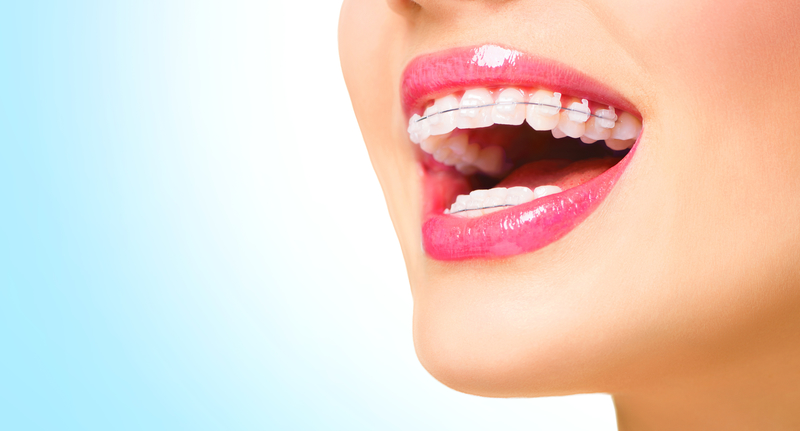
Keeping teeth clean during braces is an important part of your oral health regimen, but keeping teeth white with braces sometimes presents a problem. Teeth whitening with braces is a common practice that orthodontic patients have done to keep their teeth white during orthodontic care. Which teeth whitening treatment you use will depend on what type of braces you have. Achieving a whiter smile is not impossible with braces, but will need extra effort and care to protect your braces. Find out how you can both whiten and straighten your teeth at the same time with these tips and tricks!
In-Office versus At-Home Treatments
Teeth whitening has been a popular choice of treatment for dental patients for years now, but orthodontic patients can now receive the same treatment, too, while getting their teeth straightened at the same time. Keeping your teeth clean while undergoing orthodontic treatment is an important step in maintaining good oral health, and teeth whitening options can enhance that process. With the variety of treatment options that orthodontic patients now have to straighten their teeth, there are plenty of ways to whiten teeth while receiving care. For patients who prefer whitening their teeth at the dental office, one option that patients can choose is “chairside bleaching.” This process requires one or two office visits in which a strong bleaching agent is applied to the teeth combined with a special light to accelerate the whitening effect and lift stains. For patients with brackets on the front of their teeth, chairside bleaching can cause a two-tone effect after traditional braces are removed, so sometimes it is best to bleach after your treatment is over. For patients with lingual braces (on the backside of teeth), though, it is relatively easy to whiten teeth during treatment since teeth whitening focuses on the front of the teeth and not the back. Removable braces and retainers also allow for successful teeth whitening as they allow all of the teeth to be uncovered.
Many patients prefer at-home teeth whitening treatments over in-office treatments because it allows them the flexibility to decide when and where they whiten their teeth. For at-home treatments, gel similar to those used in dental offices will be given to you that is inserted into a customized tray which is fit to your mouth. The gel uses peroxide to bleach the tooth enamel and whiten the tooth. Even those with braces can use these custom trays after braces have been placed in the mouth. The trays have to account for the space that brackets use so the gel doesn’t displace the bracket from the tooth. With at-home treatments, though, there is a larger risk of sensitivity and gum irritation if bleaching material leaks out of the tray. Both options for teeth whitening allow patients the freedom to get the best results during their orthodontic treatment but still get the same benefits that braces offer.
Things To Consider
When deciding on which type of teeth whitening you should do, it is important to remember that the type of braces you have dictates what kind of teeth whitening you can receive. As teeth shift during orthodontic treatment, tooth sensitivity and gum irritation can increase when using mouth trays or teeth whitening strips at home. Traditional braces use brackets on the front side of the teeth to correct malocclusion while other options, like lingual braces, use brackets on the backside of teeth to straighten teeth. Whitening teeth with lingual or removable braces is much easier for patients than those with traditional braces as brackets prevent a good portion of the tooth from bleaching agents. For this reason, most orthodontists recommend using teeth whitening products once braces are removed for most effectiveness. If you do choose to use teeth whitener during treatment with traditional braces and you feel some sensitivity/tenderness, make sure to avoid whitening for a while to give your teeth a break. Chewing gum can also help with any pain you might feel from whitening agents, as well as using sensitivity toothpaste. For additional insights into what to expect when using teeth whitener with braces, meet with your orthodontist to discuss which option is best for your mouth.
Everyday Teeth Whitening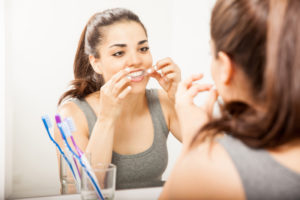
Many patients use everyday teeth whitening products to improve their smile rather than going to a dental office or using expensive products. As teeth whitening has become more popular, more and more products have been created to enhance smiles in the comfort of one’s home with a smaller price tag than traditional methods. For anyone, with or without braces, using a teeth whitening toothpaste is a great and easy way to whiten your smile and maintain good oral health at the same time. Even if you have sensitive teeth, there are still plenty of options for toothpaste that whiten teeth without putting your sensitive mouth at risk. There is also teeth whitening mouthwash that whitens and protects teeth from stains while freshening your breath at the same time. Switching from a manual to electric toothbrush can further whiten your teeth by polishing away surface stains that appear under braces. With all of the different dental items that can be tailored to your individual needs, you can have a whiter smile with braces in no time.
For more information on how you can whiten your teeth during orthodontic treatment, call Belmar Orthodontics at (303) 225-9016! Our team is committed to helping you and your family get the healthiest and brightest smile possible!
Orthodontic Treatment as Restorative Dentistry

Did you know that getting your teeth straightened can be a form of restorative dentistry? This is because restorative dentistry seeks to restore or bring your smile to a more perfect state. Crooked teeth can become straight, which in turn starts to relieve the burdens of tooth decay, gum disease, bad breath and other oral health problems. If you want to restore your smile once more, see what our 4 different orthodontic options can do for you!
Why Is Your Smile Important?
Some patients don’t realize just how important a smile really is. Studies show that your smile is one of the first things another person will notice about you. Is that smile showing that you are healthy and confident? Or do you hide your smile because of crooked teeth, discoloration or other aspects you don’t like? When a smile looks good, studies show that people often feel more confident and they exude that confidence much easier. A better smile can lead a person to be more social and confident to pursue successful endeavors.
It’s not only what a smile does for a person themself that’s important. How your smile looks to others also will determine a lot about how successful you are. The makes of the orthodontic appliance Invisalign conducted a study about smiles, and what they found was quite amazing:
- 1/3rd of people notice a person’s smile before any other feature.
- Those who have a straighter, more beautiful smile are 45% more likely to get a job over a competitor with a crooked or discolored smile.
- Your smile can send messages about how healthy you are and how happy you seem. When that smile is straighter and more beautiful, others will see you as 21% more likely to be healthier and 47% happier.
- 73% of people are more likely to trust you at first glance if you have a better smile.
- You’re 58% more likely to be perceived as wealthy and 57% more likely to get a date if you have a great smile.
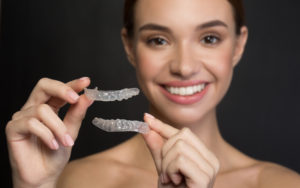
What Is Restorative Dentistry?
Your teeth will determine most of how good your oral health. When you eat, sugars in the food you eat mix with mouth bacteria. That creates plaque, or that sticky, acidic substance that coats your teeth. Over time, if proper oral hygiene habits aren’t observed, the teeth will change colors and decay. This happens much easier to the teeth if they are crooked. That’s because it’s harder to clean between the teeth if there is no way to get floss through crooked teeth.
Restorative dentistry seeks to restore smiles that are crooked or damaged through decay or gum disease (a disease to the gums that happens just like tooth decay). This form of dentistry consists of dental services such as teeth whitening, same-day crowns, root canal therapy and tooth-colored fillings. There are many dental patients that will get dental veneers—also known as “porcelain veneers”—to restore their smile. This is a dental service where the top layer of your teeth is taken off and replaced with a perfect, white tooth shell. However, once that part of your natural tooth is taken off, you can’t get that natural part back. Porcelain veneers do make your smile look beautiful, but they don’t change your crooked teeth or oral health issues underneath.
Fixing the Problem with Orthodontic Treatment
Fixing the problem permanently is a great solution to getting a beautiful smile and reducing your problems with tooth decay, gum disease, bad breath and more. Straighter smiles are ones that are easier to clean and ones that look attractive and healthy. Plus, once you straighten your smile with orthodontic treatment, it can stay that way for life. Orthodontics is different than dentistry, but is absolutely important to your oral health.
Dentists will fix problems with tooth decay and gum disease. Orthodontic treatment and restorative dentistry through those braces can help prevent problems in the first place. Plus, orthodontic braces are able to correct bite and alignment issues that are caused by misaligned bites and jaws. Those issues can cause speech and development problems without intervention. Without orthodontic treatment, other restorative dentistry methods can only do so much.
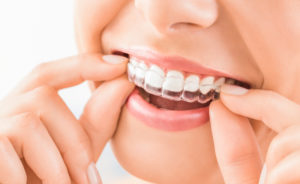
Restorative Dentistry for You
Our easiest method of restorative dentistry for teens and adults is through Invisalign treatment. This option works just as well as our lingual braces, ceramic braces and traditional metal braces. However, with Invisalign, the focus is on aesthetics as well as straightening. We want you to have a beautiful smile as you straighten, and Invisalign is a great way to achieve that.
Invisalign is a orthodontic treatment that is designed to be virtually unnoticeable on your teeth. Patients have their teeth digitally scanned in-office and a treatment plan is made for them, mapping out how orthodontic treatment will transform their smile in 18 months or less. Often, patients can straighten their smile in 1/3rd of that time, depending on the condition of the teeth, bite and alignment. Less office visits are typically needed for this type of restorative dentistry.
You simply wear your aligners for 20-22 hours each day (and overnight), and by switching out the aligners each week, your teeth shift into a straight smile over time. The benefit of this restorative dentistry option is that you are actually fixing the root cause of oral health problems. Crooked teeth cause tooth decay and gum disease to worsen, but you avoid that with a straight smile. With other restorative dentistry options (such as teeth whitening or veneers), you will still have the crooked teeth (although masked), and possibly the dental problems. Avoid all that while still getting a beautiful smile with Invisalign. If you want to learn more about this restorative dentistry option for adults and teens, contact Belmar Orthodontics today at (303) 225-9016!
Teeth Whitening After Braces
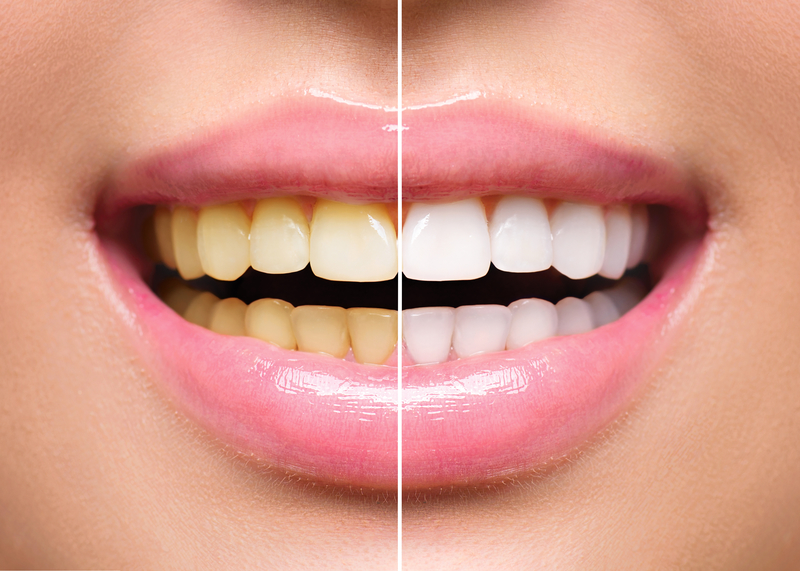
Many patients expect their braces to come off, exposing a beautiful, white smile. However, the teeth are often not bright and sparkling when brackets and wires come off. This is why many patients opt to have teeth whitening treatments after their orthodontic treatment is over. You can even do it right after your braces come off. We can help you to know what you can expect when your braces come off and how to approach teeth whitening to brighten your smile!
Keeping Teeth Healthy During Braces
If you want whiter teeth when your braces come off, it does matter what you do during your time with braces. Your oral health habits and what you eat will make a big difference in the look of your teeth. With braces, teeth are much harder to clean, so with everything you eat, make sure you know what will happen with your teeth. Sugary foods will stick to your teeth more and might sit on your teeth longer, causing decay. Chips, nuts and hard foods can break brackets and wires and even your teeth. Certain drinks will dye your tooth enamel, and can leave uneven shades if you drink them a lot. Consider the following:
- Avoid hard foods that will break orthodontic appliances. These include: nuts, popcorn, corn on the cob, carrots, hard candy, chips, ice, apples and crusty bread.
- Don’t eat sticky foods, which are really hard to get out of brackets. These include: gum, caramel, Sugar Daddies, Skittles, taffies, Tootsie Rolls, gummies, fruit snacks, Starburst, licorice and similar foods.
- Sodas and carbonated drinks. Carbonic acid in these drinks will erode tooth enamel over time.
- Juices and Citrus: Citric acid erodes tooth enamel as well. Juices are generally high in sugar and can contain acids.
It’s also very important to keep your teeth clean. If you have drinks that are purple, blue, red, and other dark colors, these will all stain your teeth. When you do drink these drinks, make sure to brush afterwards (about 20 minutes after) to take away the dye. Keep your teeth clean all day long by continually brushing and flossing so your teeth can stay as white as possible. The more you do for your teeth when you have braces, the less you have to do afterwards.
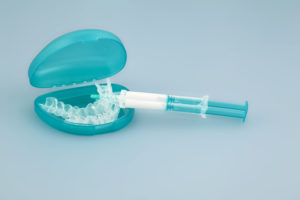
When Your Braces Come Off
Many patients picture beautiful, white teeth when their braces come off. Even though your teeth will be beautiful and straight, they likely won’t be white. They will at least be the same color that they were when you got braces on your teeth. Depending on your oral health habits, your teeth might actually be darker if you had foods with dyes, tooth decay problems or didn’t brush and floss often. If your teeth aren’t white, don’t fret! Most patients do teeth whitening after their braces to get their new straight smile sparkling.
Teeth Whitening After Braces
Teeth whitening is one of the easiest dental services you can get. If you get teeth whitening through a dentist, you will have a dental hygienist whiten your teeth with professional-grade solutions. You will have teeth whitening materials placed on your teeth that will be set with ultraviolet light. Your teeth will then cure for 20-60 minutes until they reach the white shade you desire. This process can be done several times in-office on the same day, or spread out over several days if the teeth are sensitive.
Dentists also provide take-home professional-grade solutions that patients can do on their own time that work much quicker than toothpastes, strips or over-the counter treatments. With any teeth whitening you do, always double check the chemicals being used and what the process will be like. With a professional service, your results are usually guaranteed or the process is redone.
Tips to remember when doing teeth whitening:
- Many at-home products won’t whiten your teeth significantly. Many toothpastes only remove plaque or surface stains, but they don’t actually change the color of your teeth.
- When choosing over-the-counter products, look for ones with hydrogen peroxide or carbamide peroxide. These will actually change the shade of your teeth whiter.
- Your best and quickest results will come from getting professional teeth whitening from a dentist. Teeth whitening can even be done in just one office visit, which is great for upcoming formal events or whitening your teeth when you have very little time.
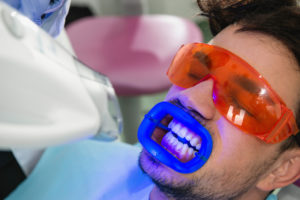
Your Oral Health
Whether your goal is to have whiter teeth or to keep your natural teeth for your entire life, how well you take care of them will determine if you meet your oral health goals. If you never brush and floss your teeth, you can’t expect them to stay healthy. If you drink sodas and juices with dyes everyday, you can expect your teeth to stain. Having healthy teeth (and even white teeth) is fairly easy if you follow certain oral health guidelines:
- Brush your teeth at least twice a day, for at least 2 minutes every time, as recommended by the American Dental Association. If you wear braces, you should brush your teeth after every meal.
- Floss every day, 1-2 times. Flossing gets 40% of your tooth surfaces that get missed when people skip.
- Use fluoridated toothpaste. Fluoride strengthens your teeth, and you can get fluoridated teeth whitening toothpastes.
- See your dentist! You need more than just an orthodontist, even though the orthodontist is very important. Seeing a professional who knows both orthodontics and dentistry is even better (like us). Every person should see their dentist for comprehensive exams and dental cleanings at least twice a year.
- See your orthodontist. When wearing braces, make sure you go to every orthodontic appointment. This helps your orthodontist know if dental problems like decay, erosion or staining are happening.
Following these guidelines can help you keep your natural teeth healthy and strong for life, even with your braces on. For more help taking care of your teeth or questions about teeth whitening after braces, call Belmar Orthodontics at (303) 225-9016!

